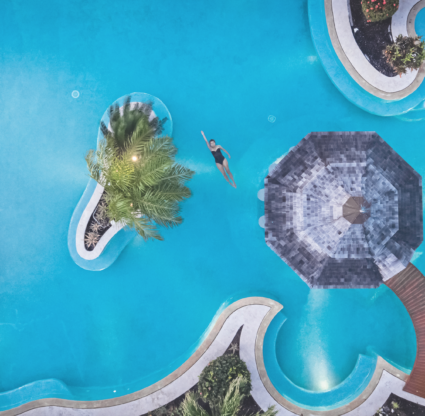Winter park is a surprising jewel of a place. Set just beyond the hectic bustle of Orlando, its upscale Park Avenue district offers fine shopping, dining and an exquisite museum.
The heart of Winter Park stretches for 10 blocks beside an open green space that has the kind of perfectly maintained grass that begs to be walked on in bare feet. It’s an ideal spot for napping or reading.
Of course, who has time for napping when Park Avenue offers so many delights? On the day of my visit, I made my way to the rose garden that borders the park’s southern end. The roses were in full bloom, bright cultivars in an array of pinks, yellows, whites and reds, and the air was fragrant with their perfume. How is it, I wondered, that I’ve lived in this state nearly my entire life and never made it to this pretty place?
After the rose garden, I strolled along Park Avenue, peeking in the lovely boutiques. There was no shortage of fine things to buy—teas and notecards and scarves—and the boulevard was pleasantly full of stylish urbanites also out for the weekend. Small, hip restaurants had tables on the sidewalk, and the stylish urbanites filled these, too.
I thought about stopping for a leisurely brunch, but I wasn’t there for the restaurants or shops or even the rose garden. I’d come for the Tiffany glass. Winter Park’s Morse Museum offers the world’s most extensive collection of art by Louis Comfort Tiffany, the American artist famous for his Art Nouveau work and, specifically, his stained glass.
 |
|
A picturesque canal winds its way to Lake Osceola in Winter Park |
A small placard at the entrance to the museum read, “Thank you for not touching the art,” and I could understand why. Each piece exuded a fragile, finely worked delicacy. I dutifully kept my hands to myself as I explored the hushed and elegant interior of the museum. There were Tiffany lamps, of course, but the collection extended far beyond his glasswork to Tiffany’s paintings, ceramic art, jewelry and architectural pieces.
Though these were mesmerizing, the true focal point of the Morse lies within the museum’s heart. There, in a cathedral-like space, is the chapel that Tiffany created for the 1893 world’s fair in Chicago. Though technically not a place of worship, this part of the museum nevertheless has a sacred feel. In the arches surrounding the altar, a mosaic of glass is set in gold. Two peacocks, done in shades of green and blue, are intertwined at the arch’s center. The work has a glittering, byzantine quality, intricate and unapologetically beautiful. I found myself staring, open-mouthed, when I first stepped in.
After I had examined the chapel windows, the hanging electrolier and the baptismal font, I took a seat on one of the pews and watched as other visitors came to admire the chapel. They, too, gaped with open mouths.
Eventually, I made my way through the rest of the museum, careful to keep my hands at my sides, and found myself standing in front of a display in a tucked-away corner. There, a backlit panel had been affixed with pieces of glass the size of pebbles. Some were opalescent, some gleamed like jewels. Their edges had been smoothed over, and a small sign tacked to the bottom said, “Please touch.”
While I watched, a young boy extended a tentative finger. Shyly, he stroked the beautiful glass.
“If you’re going to do it,” his father, standing behind him, said, “you might as well get your money’s worth.”
The man ran his hands all over the glass, flat-palmed, covering the display. The boy laughed and then did the same. I waited until they had finished and walked off before I stepped up to the display case. What a treat to touch those delicate pieces, each as bright as a gem. I felt as if I’d discovered a hidden treasure there in central Florida, the very last place I would have looked.
If you go …
• The Charles Hosmer Morse Museum (445 N. Park Ave.; morsemuseum.org) offers an extensive array of art by Louis Comfort Tiffany. The collection goes far beyond the classic Tiffany lamp, with paintings, pottery, jewelry and architectural elements by the master.
• There are many restaurants along Winter Park’s upscale Park Avenue, but there’s no reason to go farther than across the street from the museum. Boca (358 N. Park Ave.; bocakbm.com) has an excellent selection of farm-to-table options. If you go for brunch, be sure to try the carrot cake pancakes.
• Park Avenue features a tempting selection of high-end retailers. Look for stationary stores (The Paper Shop, 545 N. Park Ave.; papershop.com), spice shops (The Spice & Tea Exchange, 309 N. Park Ave.; spiceandtea.com) and clothing boutiques (Scout & Molly’s, 346 N. Park Ave.; parkave.scoutandmollys.com).





